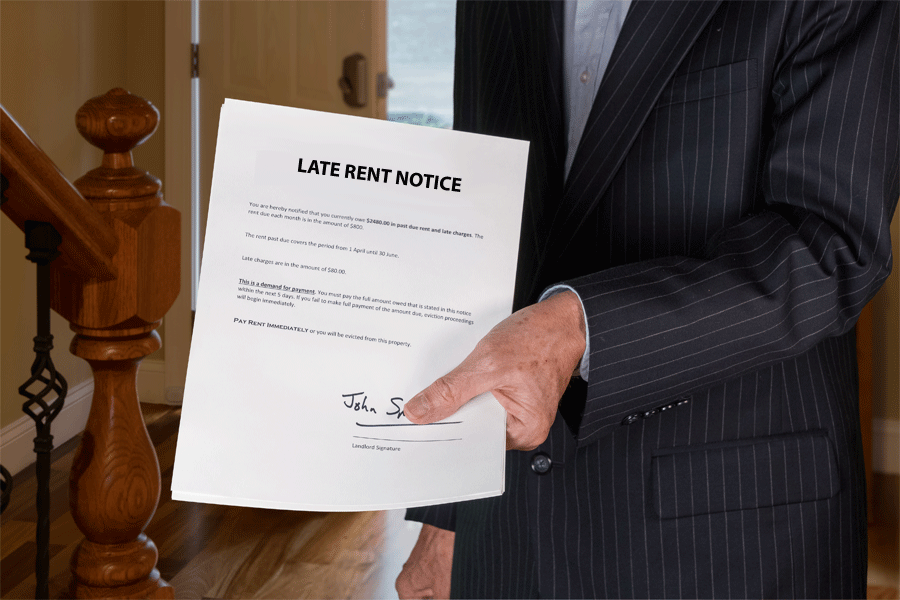Standardized documentation, such as a doctor’s note, is mandatory in healthcare. It records key information needed to provide quality care to patients with eye-related issues. This includes eye diagnosis, historical data, and recommended treatments. This record is then referenced to formulate tailored treatment plans that address the patient’s unique needs. Additionally, it streamlines the sharing of information and collaboration among eye care professionals attending to the patient.
This article discusses the different types of notes that you can issue to your patients under different scenarios, such as healthcare situations, educational settings, and even legal matters. It will also discuss the information you should include in this note and the steps you should follow to complete a template for creating a doctor’s note.
To simplify the writing process, you can use the readily available and professional templates we have provided in various formats to craft notes for your eye patients. Also, there are free samples you can reference to understand how to format these notes.
What is an Eye Doctor’s Note?
An eye doctor’s note typically refers to an organized and standardized document used by an optometrist or ophthalmologist (eye doctor).
It documents your patient’s eye-related medical condition, personal information, history, diagnosis, treatment plans, or specific interventions required.
This document facilitates consistent and detailed documentation of your patient’s journey, which helps develop patient-specific treatment plans that lead to improved outcomes. Also, it enhances communication and streamlines workflows, thus aiding in accurate diagnoses and enhanced patient care.
You can use the note to report a patient’s eye health status in different scenarios. These include workplaces and educational institutions where vision impairment may affect functionality and productivity. You will be requested this note for insurance purposes, to verify health-related eligibility, mitigate liability, and guide which actions need to be implemented to treat the diagnosed individuals.
pro tip
Consider using a template to create an eye note instead of starting from scratch every time one is needed. It is a predesigned document that ensures you include all the fundamental information. However, you should double-check the information you input to verify that it is accurate and up-to-date. This facilitates the provision of patient-specific care and retains the reliability and credibility of medical records.
Free Templates




Types of Eye Doctor Notes
You will typically have to write different types of notes depending on the situation at hand. This is because the notes may vary based on the specific eye-related problem, treatment procedure undertaken, or application of the document.
Here are common types of doctor notes ophthalmologists, optometrists, and other eye care professionals can write:
Eye allergy or medical condition note
An eye allergy or medical condition note is issued to document and explain a patient’s eye-related allergies or medical conditions such as irritation, pink eye, or redness. This note may detail the diagnosis and recommended treatments. This way, it validates the patient’s claim as they request sick leave and their eye health status before resuming school or work after recovery.
Excuse eye doctor note for school or work
An eye doctor’s note is typically provided to students or employees when they cannot perform their responsibilities at school or work due to an eye-related medical issue. It documents the recommendations that can be implemented to accommodate the patient’s visual needs. Such accommodations include adjustments to lighting, screen magnification software, the use of prescription eyewear, and reduced screen time. This note verifies the legitimacy of the condition or issue and offers a professional justification for the requested adjustments.
Windows tint eye doctor note
A windows tint eye doctor’s note is often required for individuals working in conditions that make them more susceptible to the harmful effects of UV radiation or artificial lighting. This note certifies the medical need for specialized eyewear and may include specific recommendations for the level of tint required. It is thus written to aid the patient in seeking permission to have protective eyewear, such as glasses with tinted lenses, as a precaution.
LASIK eye doctor’s note
A LASIK eye doctor note is provided to patients who have undergone LASIK eye surgery. This note serves as a record of the procedure. It documents essential details of the procedure, such as the date of surgery, the patient’s recovery status, visual acuity improvement, and any post-operative care instructions. It serves as evidence of improved vision and can thus be utilized for scenarios where visual clarity is emphasized.
Prescription for glasses or contact lenses
A prescription for glasses or contact lenses is one of the most common types of eye doctor notes. It contains precise measurements of the patient’s refractive error (e.g., nearsightedness, farsightedness, astigmatism) and specifies the required optical correction. This prescription allows patients to purchase eyewear or contact lenses tailored to their vision needs. Glasses and lenses can significantly improve their visual acuity and comfort. As such, the note can be written to validate the patient’s condition and need for corrective eyewear to fulfill workplace, school, or legal requirements.
Information to be Included in the Eye Doctor Note
The note should convey enough information about your patient’s journey to notify the reader, who can be an eye care professional or administrative officer. This information should be conveyed in a professional manner and must be organized in a rational order. As a result, the information you include can vary from case to case.
However, below are the fundamental details you can include in this document:
Doctor/medical facility information
The doctor’s note should prominently display your information. This includes your name, professional title (e.g., Optometrist or Ophthalmologist), and contact details (address and phone number of the medical facility or clinic where the evaluation took place). Also, you can input any professional credentials that can identify or distinguish your expertise. This information establishes the document’s authenticity and credibility.
Date
The date of writing the note is crucial for establishing the timeline of the patient’s evaluation and care. It should be clearly indicated, typically at the top of the note. It serves as a time-stamp of the patient’s eye health status at a specific time and day.
Patient information
Patient-specific information is essential and should include the following: full name, date of birth, contact information (address, phone number), gender, and identification number (if applicable, such as a medical record number). This information facilitates quick and accurate identification as well as filing of medical records.
Medical history
A comprehensive medical history section should summarize the patient’s relevant medical background. This encompasses pre-existing eye conditions, systemic health issues, allergies, medications, surgeries, and family history of eye diseases. This information helps in understanding the context of the current eye issue and suitable treatment and recommendations.
Symptoms and concerns
This section outlines the patient’s reported symptoms and concerns in detail. It should describe any discomfort, pain, visual disturbances, or changes in vision that prompted the patient to visit you. The patient’s subjective experience lets you know their primary concern and is thus essential for diagnosis.
pro tip
You should use a template to encourage open communication and collaboration with your patients. Urge them to share their concerns, symptoms, and unique experiences freely. This results in a more accurate diagnosis, improving the efficacy of any treatment interventions.
Visual acuity measurements
Visual acuity measurements are fundamental in assessing a patient’s vision. The note should include the results of the baseline visual acuity measurements. These serve as the benchmark or point of reference for the eye health journey. Make sure to include uncorrected and corrected vision measurements. This produces a comprehensive overview of the patient’s eye health.
Diagnostic tests
The note should detail any diagnostic tests or assessments performed during the patient’s visit. This might include refraction test results (if applicable), intraocular pressure measurements (tonometry), visual field tests, fundus examination findings, imaging studies (e.g., retinal photos or OCT scans), or any other.
Diagnosis
The diagnosis section should provide a clear and concise statement of the patient’s eye condition or the nature of the visual problem. For example, glaucoma, dry eyes, or cataracts. This is based on your professional evaluation and the diagnostic tests conducted.
Treatment plan
The treatment plan outlines the recommended interventions or therapies. It should specify medications prescribed (if any), surgical procedures (if required), and vision correction options (e.g., glasses, contact lenses). Clearly document the steps the patient should follow. When defining the action plan, tailor it to align with their commitments, such as work or school. The note may also outline readjustment strategies, such as lifestyle or dietary changes (if applicable), and instructions for at-home care, such as reduced screen time.
Follow-up schedule
You should specify a follow-up schedule, including the date and purpose of the next appointment. This is crucial for tracking progress, adjusting the treatment plan, and monitoring the patient’s eye health. It also facilitates immediate response or adjustment to changes in the patient’s condition or circumstances.
Signatures
Lastly, you should sign and date the note. This confirms the authenticity and accuracy of its content. It also shows your commitment to taking accountability for the document’s stipulations.
What is a Fake Eye Doctor’s Note?
A fake eye doctor’s note is a fraudulent document used to mislead employers, schools, or authorities into believing that the eye care professional has provided legitimate medical information about a patient’s eye health status. As a result, it may include inaccurate information such as symptoms, diagnosis, treatment recommendations, and follow-up schedules.
Such notes are typically issued to assist individuals in obtaining unauthorized leave from work or school, avoid certain responsibilities, or secure special accommodations. Therefore, providing these notes is a deceptive, unethical, and often illegal practice. It can lead to serious consequences, including disciplinary actions, loss of professional credibility, termination of employment, or legal repercussions. Therefore, a qualified eye doctor must always ensure to write or sign off on legitimate medical documentation to ensure transparency and honesty in all situations.
warning
While a fake doctor’s note is a quick solution for your patients who want a leave of absence or access to certain privileges at work or school, it can gravely harm your professional reputation and networks. Therefore, it is advisable that you encourage your patients to exercise honesty and transparency while requesting accommodations from their employers and educational institutions instead of using dishonest means. This stance upholds your professional ethics and personal integrity and nurtures a culture of honesty and trust with your patients.
Step-by-Step Guide to Using Your Eye Doctor’s Note Template Effectively
A template offers a starting point when writing a doctor’s note for your eye patients. Therefore, it prompts you to input the information needed and provides a structure for guiding you on how to organize a comprehensive note.
Here is a procedure you can adopt to complete such a template:
Select a relevant template
Start by selecting a template that aligns with the specific purpose of the note. Templates will be specialized for various uses, whether for documenting medical history, absence from work or school, follow-up appointments, referrals, prescriptions, or other needs.
Familiarize yourself with the template
Take the time to review the selected template thoroughly. Ensure that it includes all necessary sections and information required for the specific situation. Understand each section’s purpose, such as doctor information, patient details, diagnosis, and treatment plan. Familiarity with the template will help you accurately complete it.
Personalize the template
Tailor the template to your individual circumstances by inputting accurate and up-to-date information. Include unique identification details, including the facility’s name, your name, and contact information in the header. If applicable, you can also personalize the template to reflect your practice’s branding.
Integration into systems
Integrate the template into your existing record-keeping system. If your facility uses an EHR (Electronic Health Record) software, ensure the note is submitted through the appropriate channels. This practice streamlines data entry, facilitates quick access to patient information, and eliminates duplication of records.
Test and refine
Before using the template officially, test it for accuracy and completeness. You can test with several patients and staff members and ask them to provide feedback. Then, use the feedback to correct issues, make refinements, and add components that make it more useful.
Key Takeaways
- Doctor notes are essential in healthcare for documenting eye-related issues, diagnoses, and treatments and facilitating personalized care.
- Different types of eye doctor notes exist for various scenarios, including eye allergies, school or work excuses, windows tint, LASIK surgery, and prescriptions for glasses or contact lenses.
- Key information in the note includes eye doctor/medical facility details, the date, patient information, medical history, symptoms, visual acuity measurements, diagnostic tests, diagnosis, treatment plans, follow-up schedules, and signatures.
- Templates can simplify the note-writing process for eye doctors, ensuring consistent and comprehensive documentation.
- Fake eye doctor notes are fraudulent and unethical documents used to deceive employers or schools. Using them can lead to serious consequences and harm your professional reputation.




